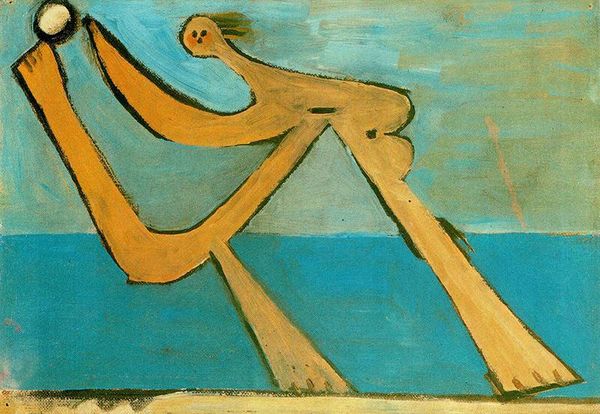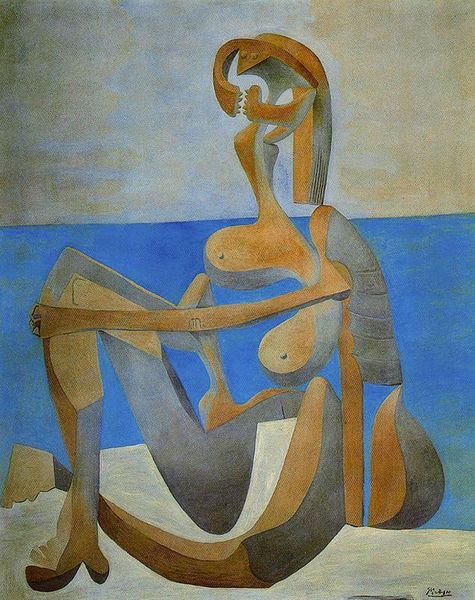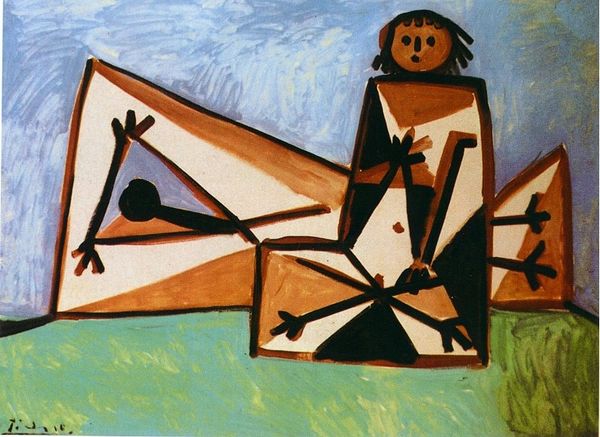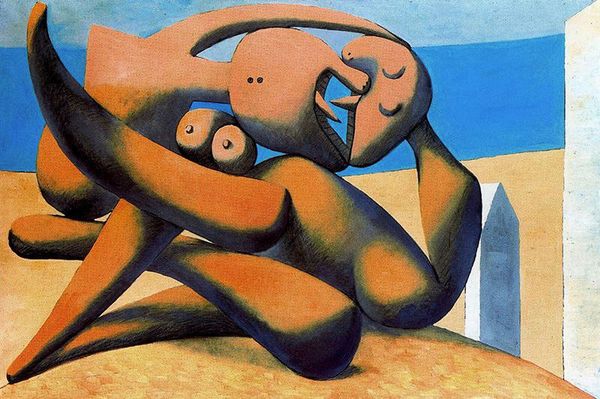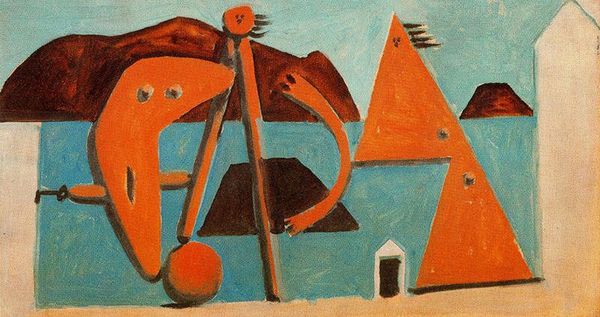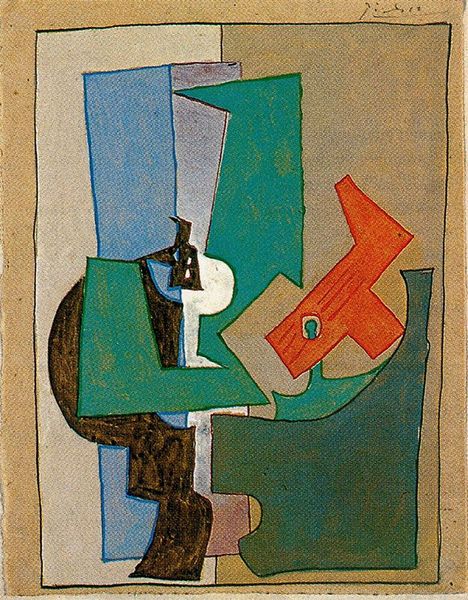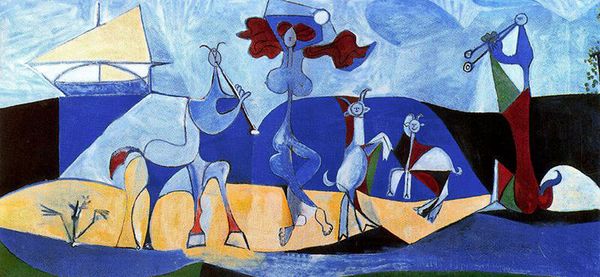
oil-paint
#
cubism
#
oil-paint
#
landscape
#
figuration
#
oil painting
#
geometric
#
modernism
Dimensions: 24 x 34.9 cm
Copyright: Pablo Picasso,Fair Use
Editor: This is "Ballplayers on the Beach" painted by Pablo Picasso in 1928, using oil paint. It has an intriguing, almost dreamlike quality. The figures are so abstracted and geometric. How do you interpret this work? Curator: It's interesting you picked up on the dreamlike quality. The late 1920s were a period of significant exploration for Picasso, heavily influenced by Surrealism's emphasis on the subconscious. While not strictly Surrealist, this work shares that movement's interest in distorted forms and psychological landscapes. We must also understand that the idealized male physique had strong ideological links to Fascist Italy in the interwar years. Is Picasso subverting those narratives? Editor: So, these fragmented bodies could be seen as Picasso challenging the traditional representation of the male form and perhaps critiquing the rise of such ideologies? Curator: Exactly. Think about the geometric shapes, the deconstruction of the human form. It moves away from glorification, towards something more unstable, more questioning. Where is the beauty and order Fascism claimed? What does it mean to show figures in this fractured manner at this historical moment? Editor: I see what you mean! It makes the image feel less celebratory and more like an interrogation. Curator: Right, and it pushes us to consider the sociopolitical climate in which it was produced. Art isn’t made in a vacuum. How can we bring feminist and queer theory here? Might these dismembered forms represent fear of the gendered body during a fraught interwar period in Europe? Editor: That gives me so much to think about. Thanks, it's fascinating how much history and theory are embedded within this seemingly simple beach scene! Curator: Absolutely! It just shows how crucial it is to see art as a reflection of and intervention within complex social power dynamics.
Comments
No comments
Be the first to comment and join the conversation on the ultimate creative platform.
